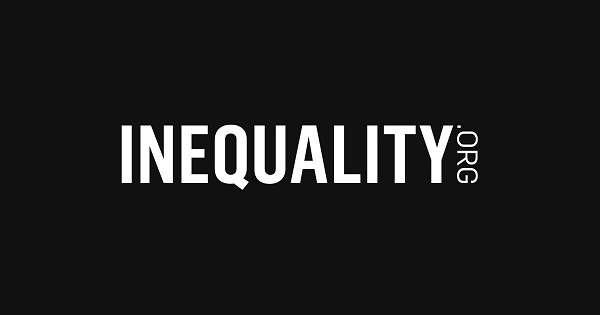
The face of inequality
What is inequality and how does it look like? Inequality is the gap between the rich and the poor, the haves and the have nots, men with means and vulnerable women of straw.
It is the slums we see each morning as we drive along major routes that intersperse well-built elite areas in the country’s cities; inequality is seen in the refuse dumps and poor sanitation in areas such as Madina and Nima, while the upscale Airport and Ridge residential areas are unscathed by insanitary conditions marring their clean environments.
It is the ability of the rich to easily check into five-star health facilities without blinking about costs and the inability of the poor to even visit a public health facility, resorting to drugs hawked in markets by unlicensed people and uncertified quack herbal concoction practitioners.
Inequality stares at every Ghanaian daily. It threatens poverty reduction efforts in the country and it is as a result of policy failures.
Inequality persists in the country despite strong economic growth figures since the country returned to democratic rule in the 1990s.
That is because the growth figures have been merely that, figures.
In practice, the figures have not reflected appreciable reduction in poverty levels, hence the disparities we often see all around us.
Some strides have been made though, with some reduction in poverty levels – which more than halved between 1992 and 2013, as contained in the inequality research report, Building a More Equal Ghana, with the sub-title: A five-point action plan to close the gap between the rich and the rest.
The report by Oxfam, SEND Ghana and the Ghana Anti-Corruption Coalition (GACC), which is yet to be launched, states that extreme poverty declined by about 25 percentage points over the same period.
If that had been sustained, close to half a million men, women and children could have been lifted out of poverty between 2006 and 2013.
However, despite the continued economic growth and poverty reduction, income inequality has been growing steadily for a number of years in the country.
Also, a pervasive issue is the gender inequality, while inequality in the availability and the affordability of social services aggravate these gaps.
“Recent trends suggest that the rich are capturing a greater share of the benefits of growth in Ghana...” it adds.
The report sees these as serious threats to poverty reduction efforts.
It calls for the concerted tackling of inequality in society, pointing out that, “Inequality creates obstacles to overcoming poverty and exclusion, and to building prosperous, cohesive societies.”
“Ghana must fight inequality to lift more people out of poverty, sustain economic growth, and maintain social cohesion,” the report adds.
The report is an advocacy tool, outlining a five-point action plan for the government to get it right in evening out the field between the rich in the country who are capturing a greater share of the benefits of growth, and the rest of the people.
The five-point action plan includes the strengthening of the country’s public financial management and making public services affordable and available.
Information contained therein includes the country’s inequality measure, inequality in reality and the plan to close the gap between the rich and the rest.
Building a More Equal Ghana will be launched at the Fiesta Royale Hotel in Accra on September 19, 2018.